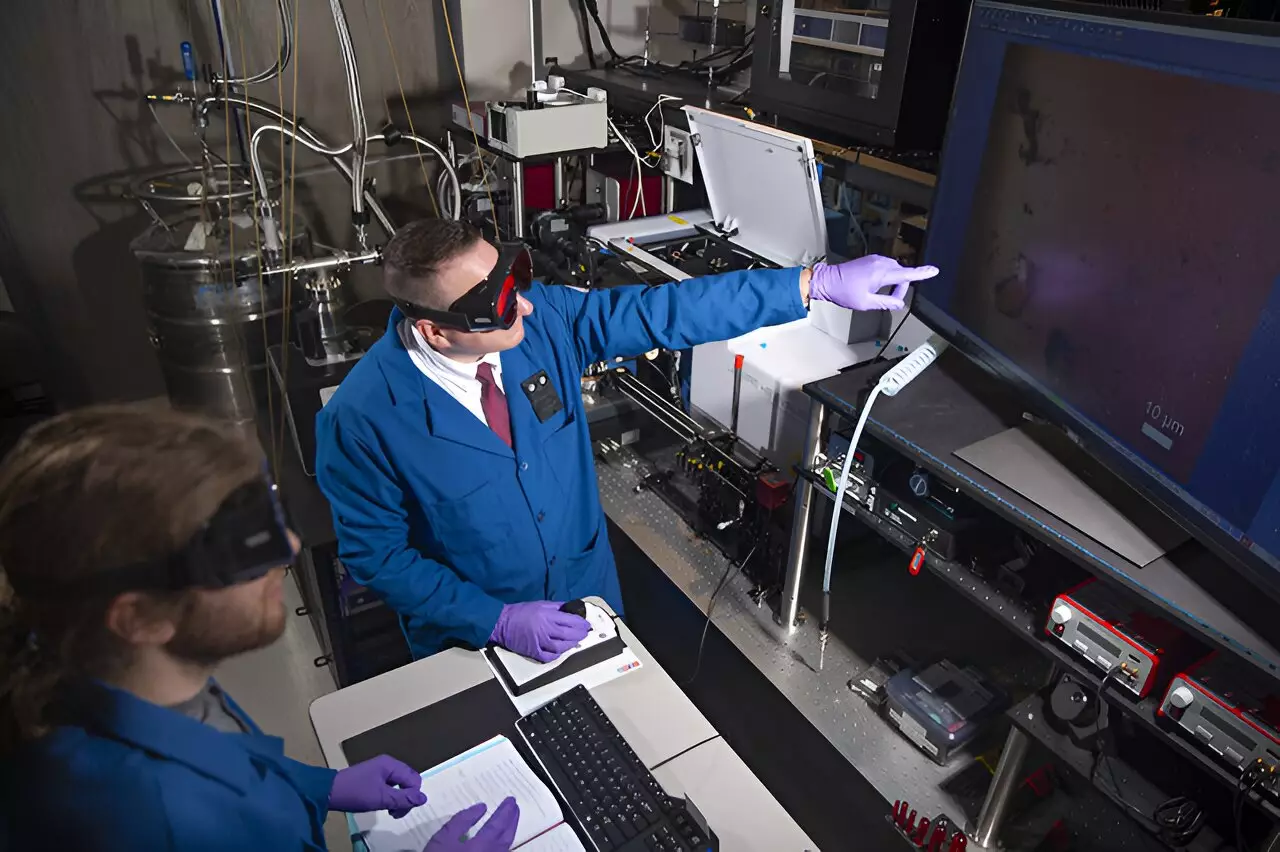Recent research into the topological phases of matter has the potential to drive significant progress in the development of innovative quantum devices. Scientists from Los Alamos National Laboratory have made a breakthrough in this field by utilizing a novel strain engineering technique to transform hafnium pentatelluride (HfTe5) into a strong topological insulator phase. By altering the material’s electrical resistance characteristics, this discovery paves the way for unlocking its quantum potential and opens up possibilities for the development of quantum optoelectronic devices, dark matter detectors, and even quantum computers.
At the University of California, Irvine, the research team cultivated HfTe5 crystals and implemented a groundbreaking strain engineering method. By applying mechanical force to the material at ultra-low temperatures of 1.5 Kelvin, or approximately minus 457 degrees Fahrenheit, they were able to induce significant changes in its behavior. These crystals underwent optical spectroscopy at Los Alamos’ Center for Integrated Nanotechnologies (CINT) laboratory to capture detailed sub-micron images. Additionally, angle-resolved photoemission spectroscopy was conducted at the University of Tennessee to shed light on the effects of strain engineering.
The research team observed that the strain engineering approach led to a remarkable transformation in HfTe5. It changed the material from a weak topological insulator to a strong topological insulator, resulting in a drastic increase in its bulk electrical resistance by over three orders of magnitude. Moreover, this technique effectively brought the topological surface states to the forefront, dominating the material’s electronic transport. These newfound properties make HfTe5 highly suitable for applications in quantum devices.
The outcomes of this study have broader implications beyond the realm of HfTe5. The success of the strain engineering technique in transforming a material’s electrical properties opens up new avenues for investigating topological phase transitions in van der Waals materials and heterostructures. These lattice-like structures, characterized by strong in-plane bonding and weak out-of-plane bonding, hold tremendous potential for scientific exploration. The analogy to the pages of a book helps visualize the unique properties of these materials.
The emergence of the topological surface states in HfTe5 presents an exciting opportunity to delve into exotic physics phenomena. By subjecting HfTe5 to high magnetic fields, researchers hope to uncover quantum anomalies and unexplained symmetry breaking events. Ongoing experiments, conducted at the Los Alamos National High Magnetic Field Laboratory—Pulsed Field Facility, aim to apply strain to HfTe5 under ultra-high magnetic fields reaching up to 65 Tesla. These experiments hold the promise of revealing new insights into the fundamental principles governing the behavior of matter.
The recent breakthrough in the field of topological phases of matter, achieved through strain engineering of HfTe5, has the potential to revolutionize the development of quantum devices. By increasing its bulk electrical resistance while simultaneously enhancing its topological surface states, the material exhibits promise for a wide range of applications in quantum technology. Furthermore, the strain engineering technique opens up opportunities for exploring the behavior of other quantum materials and studying topological phase transitions in novel lattice-like structures. Continued research in this field may lead to groundbreaking discoveries in exotic physics and lay the foundation for the next generation of quantum devices.


Leave a Reply